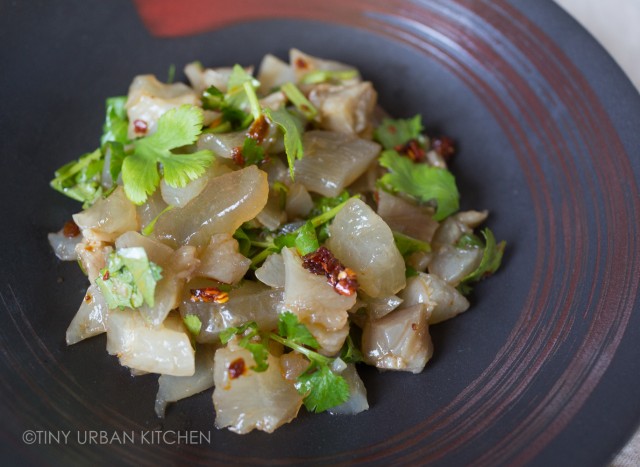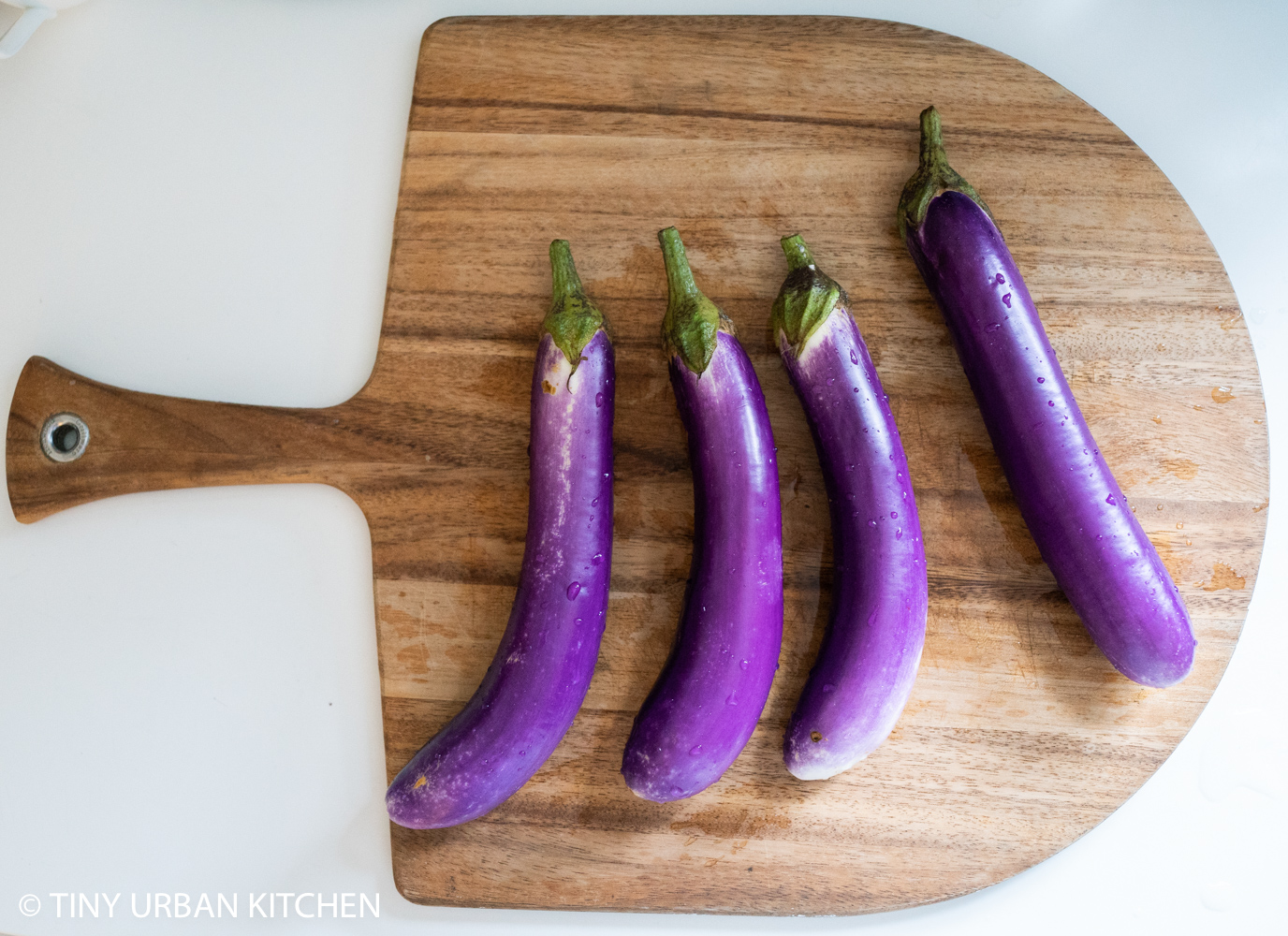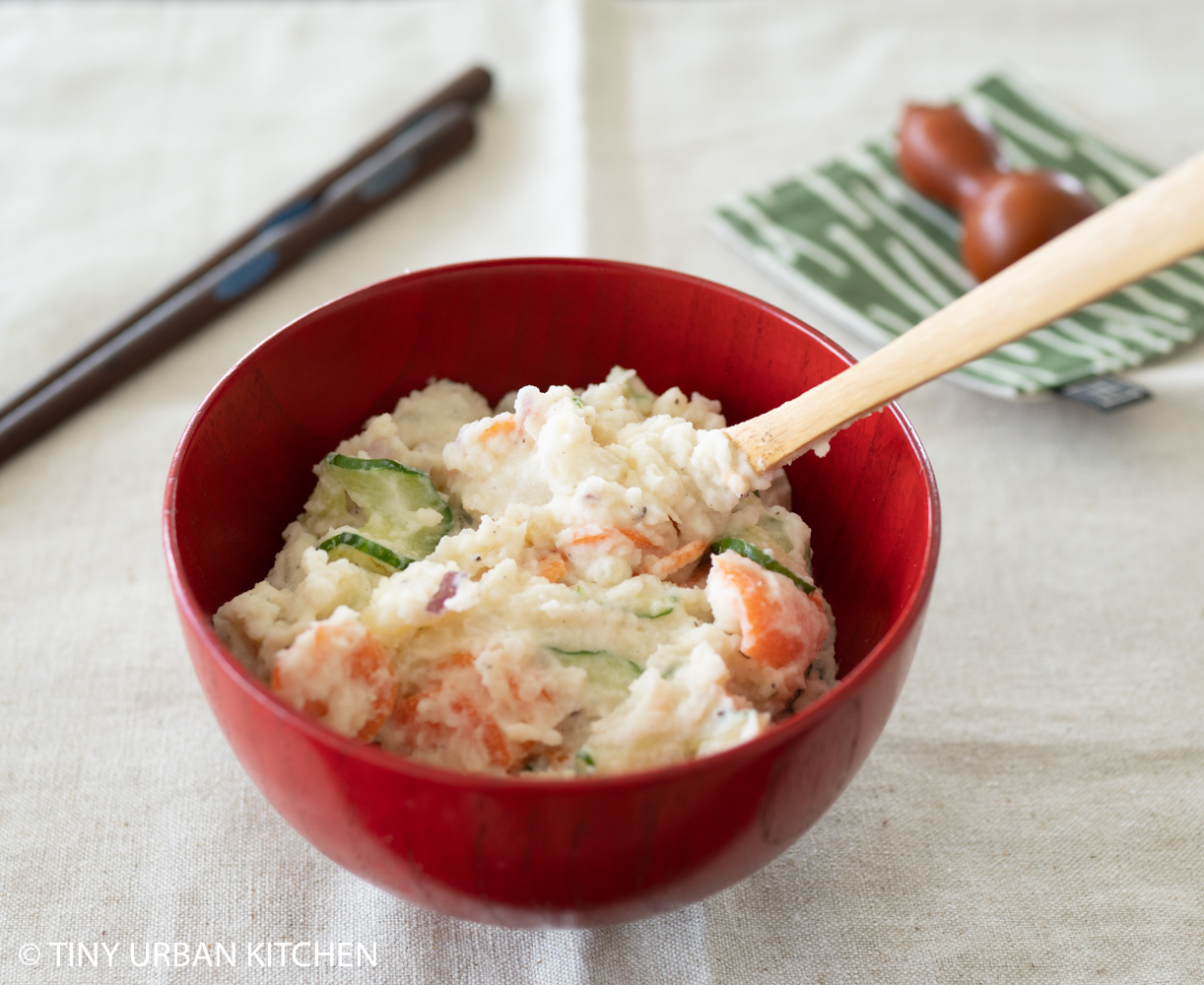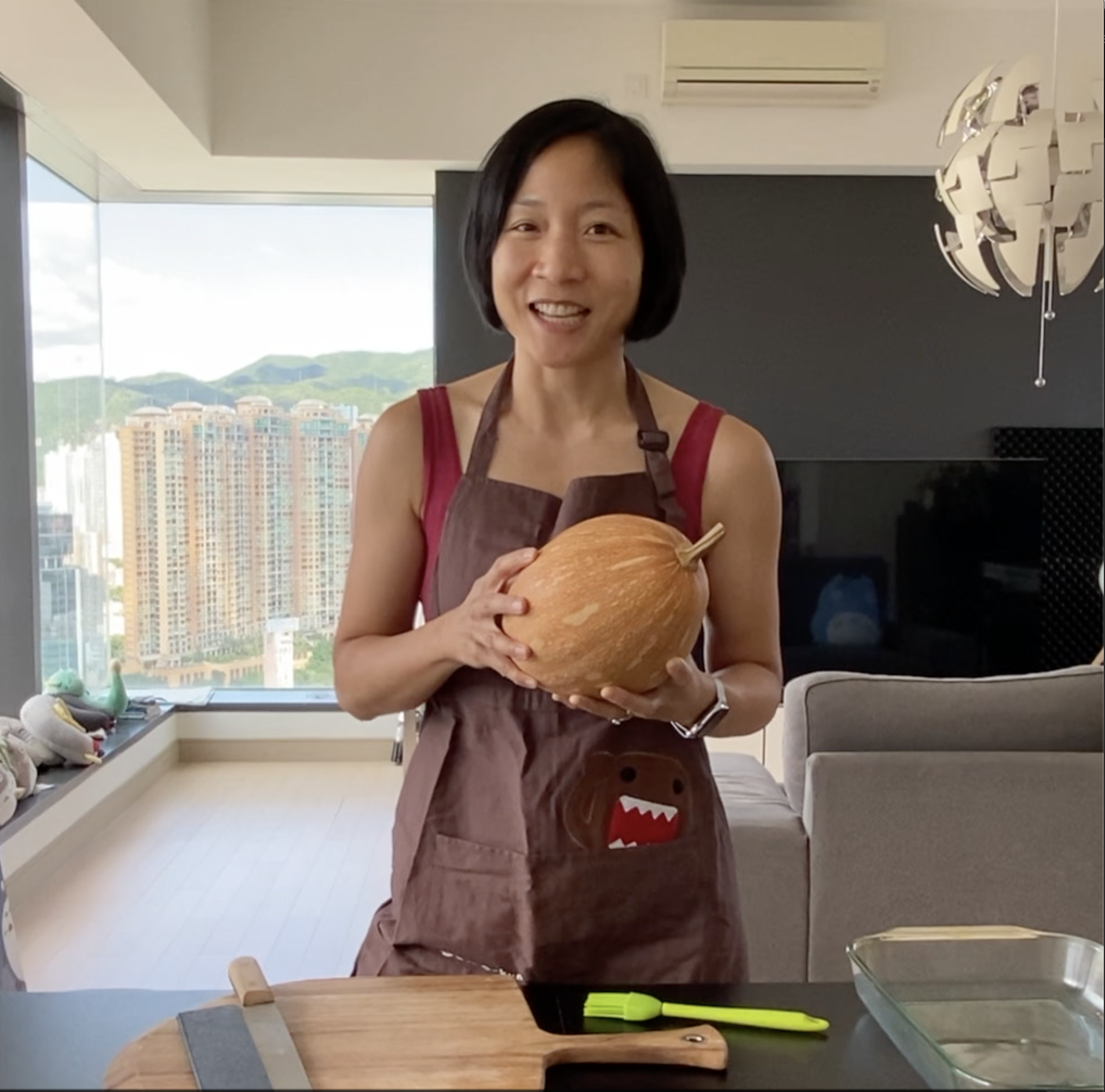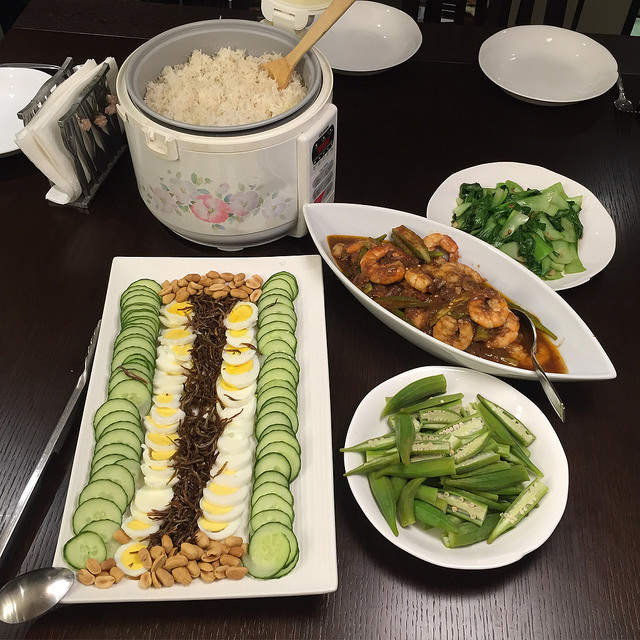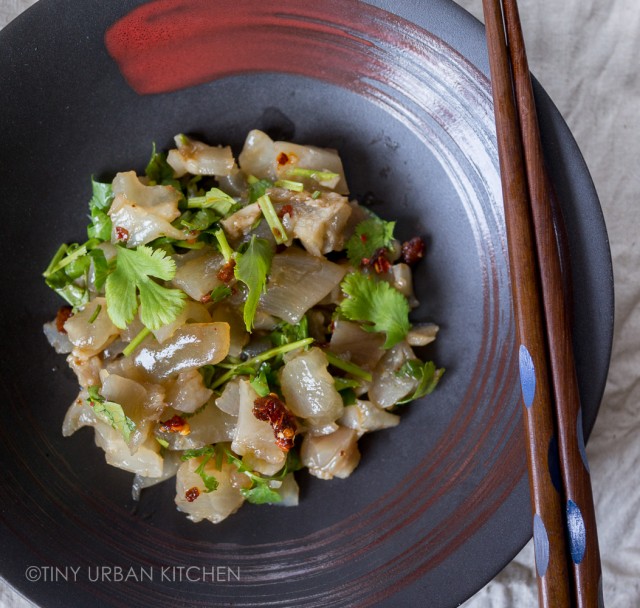
I walked into my local butcher the other day and asked if they sold tendon.
"Tendon? In the five years that I've worked here, I've never had anyone ask for tendon. I'll have to contact our farm in Maine and find out."
"What do people usually do with the tendon?"
"They usually throw it together with the bones to make stock."
Ah yes . . . stock, or bone broth, has been the latest health craze. Supposedly the longer the broth cooks, the more nutrients it can extact from the bones and surrounding tendons and cartilage. Ideally, a nutritious bone broth should be solid when chilled, a result of its high concentration of gelatin.
Even though our ancestors (or at least our grandmothers) have been making broth from bones for centuries, it isn't until very recently that people have begun drinking it daily as if it were a health elixir that will boost our immune system, rejuvenate our joints, prevent bone loss, freshen up our skin, and provide a boatload of vitamins in the process. There's even a place in New York City now dedicated to selling cups of bone broth (at $5 for a cup!) so that busy workers can get their daily nutrient boost on-the-go.
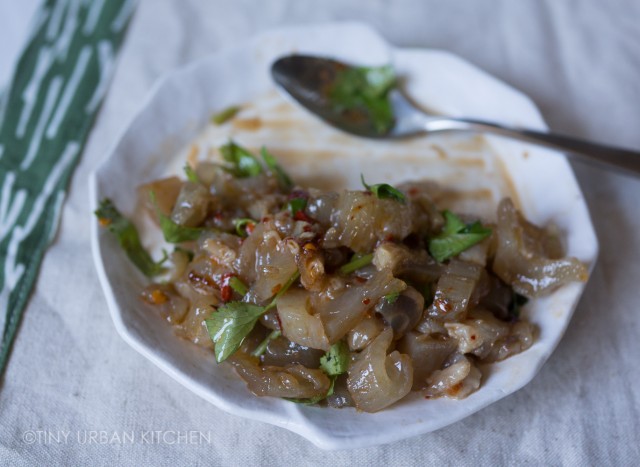
There's a lot of skepticism surrounding these claims. Some say there's limited scientific evidence to back it all up, though most people agree that broth is nutritious. Additionally, scientific evidence does support the benefit of chicken broth in reducing inflammation and collagen consumption reducing bone loss (at least in mice). {source}
I'm glad to hear that tendon, which is high in protein and low in fat, is at least neutral if not nutritious, because I absolutely LOVE it. Whenever I order pho at a Vietnamese restaurant, I always get the beef + tendon option. I can't help but order mala beef tendon every time I'm at a Sichuan restaurant.
And then more recently, my mom brought over some tendon she had made.
It was phenomenal. Soft and gelatinous, tendon is like the fatty part of pork belly but without any of the fat. It's like eating fat but knowing it's virtually fat free. Guiltless decadence tossed in just a bit of chili oil, soy sauce, sesame oil, and tons of cilantro.
It was heavenly and I wanted to make my own.

But tendon's not that readily available at a typical Western supermarket.
My mom got around this by developing a relationship with a local butcher in Ohio. This guy saves up tendon for her (freezes it) until he has around 5-10 pounds that he can sell her. She then drives the 45-minute trek to pick it up.
I'm hoping that I can develop a similar sort of relationship with my local butcher, who sort of knows me know because every week I pop in and ask about the status of the tendons.
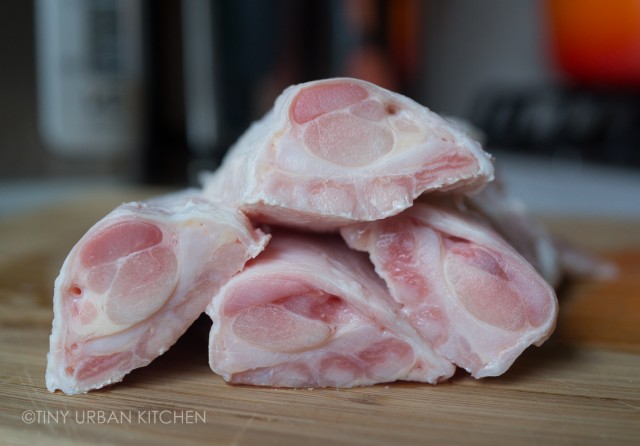
Though I'm still waiting on that source, I recently stopped by H-Mart (Korean market near my home), and found some in the freezer section. I'll still wait for my local butcher, but for now, I wanted to try making this delectable side dish that I'd been craving for so long. After getting instructions over the phone (and via email
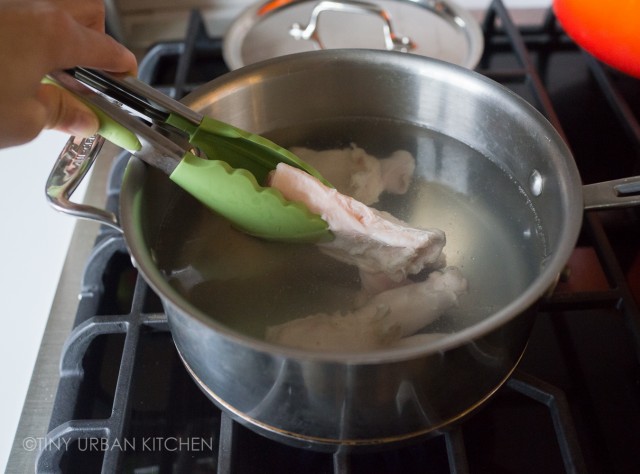
After defrosting the tendons, briefly boil them for about 10 minutes, allowing any scum to float to the surface.
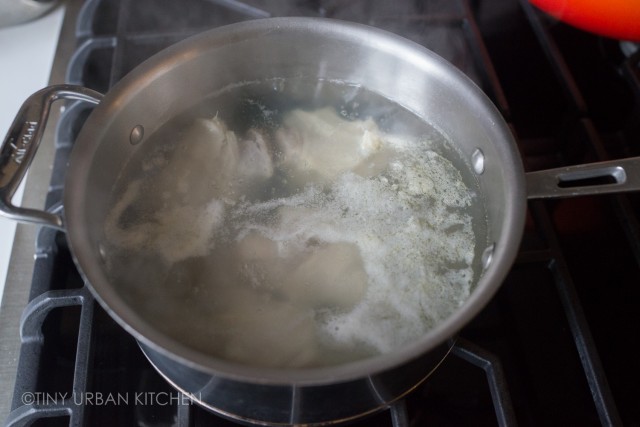
Dump this water and rinse the tendon pieces well.
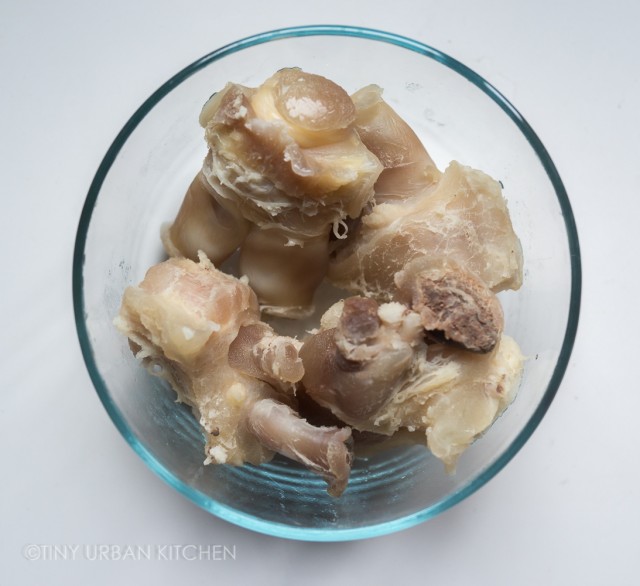
In my case, they shrank significantly after the first boil and became very tough and almost rigid.
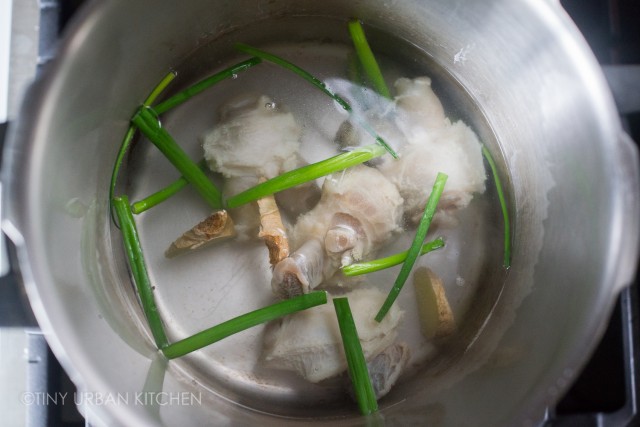
Add fresh clean water, a pinch of baking soda, a couple slices of ginger, and scallions. Cook under pressure at high for 45 minutes to 1 hour. If you don't have a pressure cooker, you can cook on low for many, many hours. I think my mom cooks it for around 3 hours or longer.
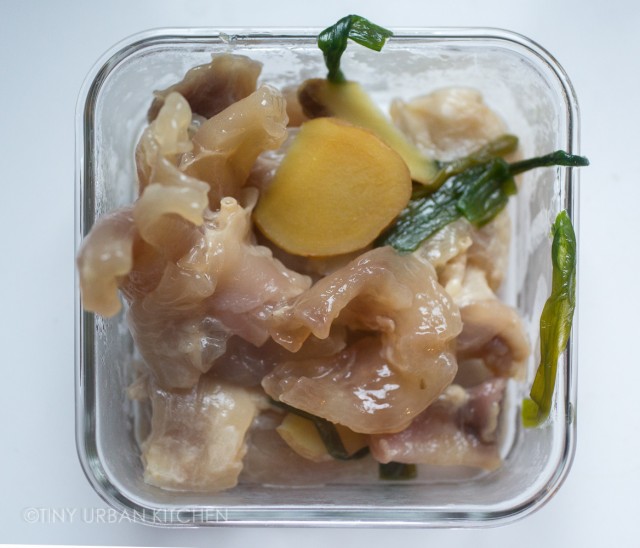
When it's all done, the texture should be quite different. It should be soft, gelatinous, and almost a bit hard to handle because it's so soft. You want to refrigerate it at this point so that it's easier to slice.
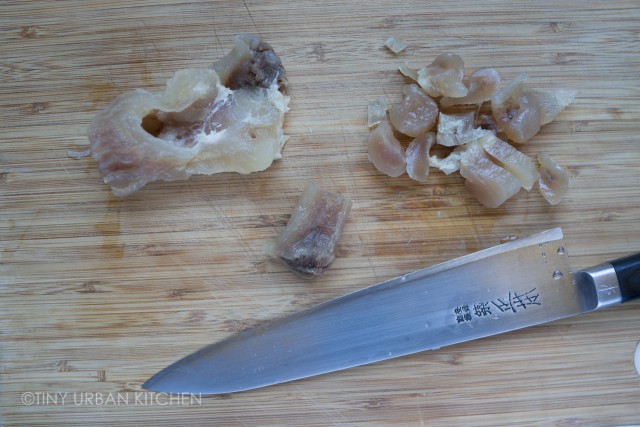
Once cooled, you can slice them into bite sized pieces.
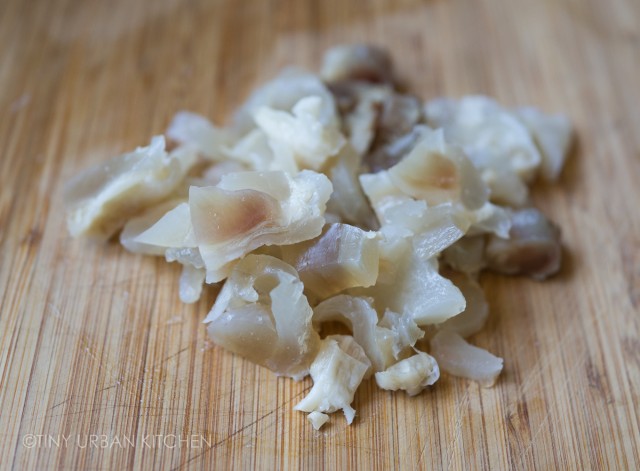
Tendon by itself is rather neutral and flavorless. (It's the texture that makes it shine.) As a result, you can think of it as blank canvas for whatever sauce you want to add.
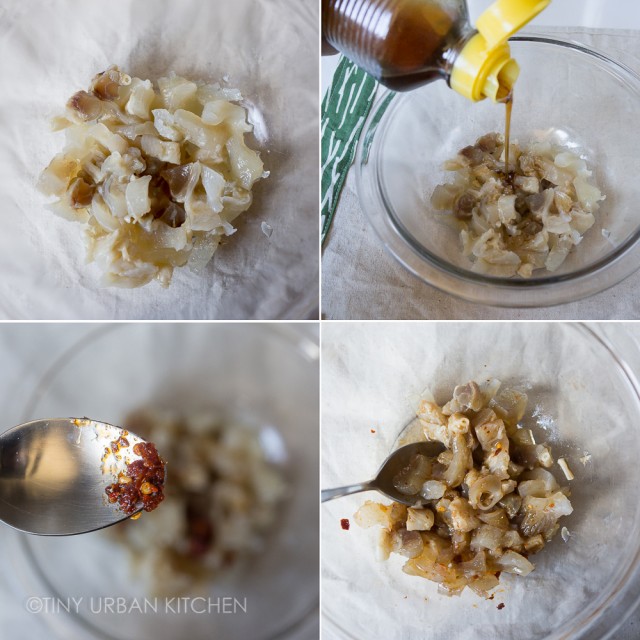
I dress mine simply: a tiny bit of sesame oil, soy sauce, and fragrant chili oil. I think a bit of vinegar would be delicious as well. I like to microwave the tendon briefly if I take it straight out of the refrigerator (like 15 seconds!) just to soften it up.
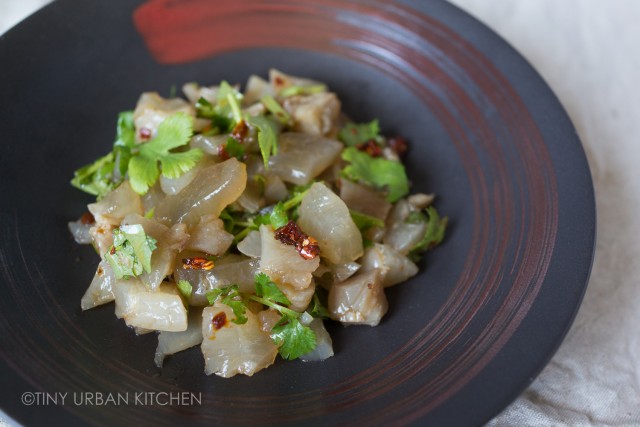
Finally, toss with fresh herbs, like cilantro, and serve.
- beef tendon, 2 lbs
- scallions, 2-3 stalks
- ginger, 2-3 slices
- baking soda, ½ tsp
- Bring a pot of water to a boil. Add beef tendon and cook for 5-10 minutes, or until white scum has floated to the top. Dump out the water and rinse the tendon well.
- In a pressure cooker (or stockpot), add tendon and enough water to cover the tendons.
- Add scallions, ginger, and baking soda.
- Cook at high pressure for 45 minutes to 1 hour. Release pressure according to the manufacturer's instructions. If not using a pressure cooker, bring to a boil and then lower to a simmer and cook for about 3 hours, or until the tendon is soft.
- Remove tendon from the pot and refrigerate for at least a couple hours, if not overnight.
- Once cool, slice the tendon into bite sized pieces and toss with sesame oil, soy sauce, and chili oil to taste.
- Serve!
Cook's Note: I did have a weird side effect with the tendon that I purchased from H-Mart. For some odd reason, the tendon had a weird ammonia smell after I cooked it in the pressure cooker. I had to boil it in fresh water for another 15 minutes or so to get rid of the smell. I have no idea what was causing it. I wondered whether cooking with baking soda under pressure could cause some weird reaction to result in ammonia, but I couldn't think of a way that this would chemically work (no, I did not use baker's . My current hypothesis is that tendon from H-Mart has been treated with ammonia gas in order to prevent bacterial growth (this is a known treatment for certain types of beef). I hope to test this same recipe with a different source of tendon (like the one from my local butcher) to see if I still get the same smell. Some recipes omit the baking soda, so that's another option to try as well, though it might lengthen the cooking time. (My mom says the baking soda really helps break down the tendon.)













